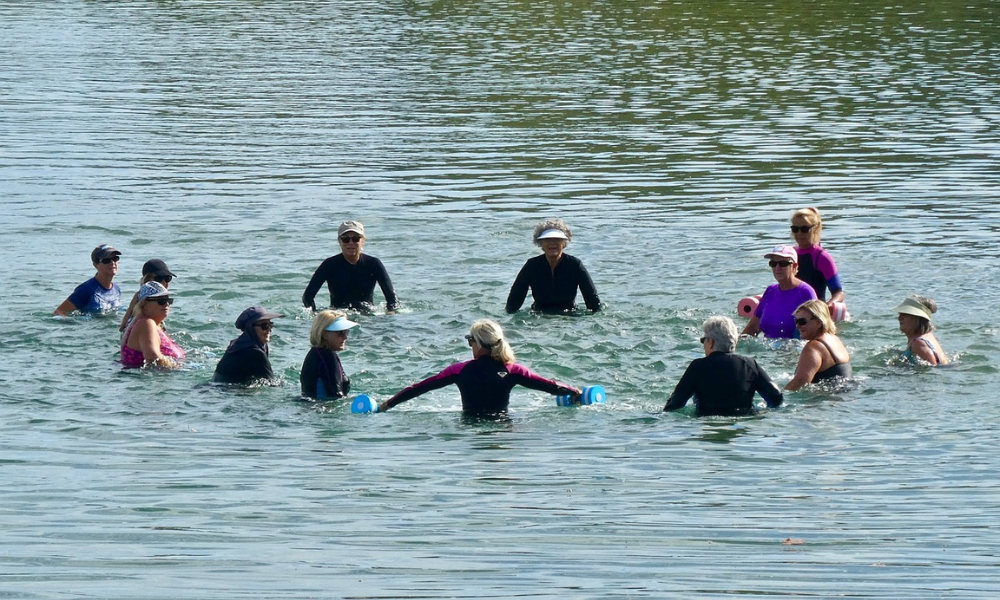As the title suggests, mental health challenges may be both a cause and outcome of an older adult experiencing loneliness and/or social isolation.
Factors affecting mental health in older adults
The overall prevalence of mental and behavioral health challenges among older adults is generally lower than other age groups. The impact, however, can be more significant, which is further complicated by the fact that older adults are less likely to receive treatment for mental health and behavioral health symptoms. A number of factors can place one at risk for a mental health challenge, including poor physical health or disability, limited social support, substance use disorder, and/or stressors such as loss, caregiving, and loneliness or social isolation (NASEM, 2023). In this month of recognition for both older adults and mental health, we will consider the role of loneliness (the experience when expectations for relationships are not realized) and/or social isolation (the number of contacts one has in a period of time) on older adults’ social connectedness and mental well-being.
Social Isolation and Loneliness’ effects on individuals’ ability to be socially connected
Secondly, as both the cause and result of significant physical and mental health challenges, loneliness and/or social isolation can negatively impact one’s ability to be socially connected to others within their family and community. While only one-quarter to one-third of older adults report experiencing loneliness and/or social isolation, those with poorer physical health issues are at 50% greater risk for loneliness than their counterparts who report better health (CIGNA, 2018; NASEM, 2020). Related to mental health for example, older adults who experience late-life onset of depression are more likely to report feeling loneliness prior to the depression symptoms (Mann et al., 2022). These findings suggest that loneliness and social isolation need our attention and intervention. As U.S. Surgeon General, Vivek Murthy, MD, so aptly states (U.S. Surgeon General’s Office, 2023):
“Social connectedness may be one of the strongest protective factors against self-harm and suicide among people with and without serious underlying mental health challenges.”
Strategies for Intervention in Loneliness and Social Isolation
While there is no one intervention that is considered the perfect solution to prevent or eliminate loneliness and/or social isolation for every person who experiences them, strategies often include opportunities for older adults to interact with others in-person, online, and even phone calls for social, cultural, educational, and/or physical activity-related opportunities. Joining others for interesting, stimulating, and healthy activities can enhance one’s sense of connectedness, improve physical and mental health, AND decrease loneliness and social isolation. For more information on one such intervention, visit the Gateway Geriatric Education Center to learn about a Circle of Friends.
How You Can Intervene
Dr. Murthy further calls on all of us—older adults, family members, caregivers, and professionals—to commit to a national strategy to promote the value of social connectedness. At every level of our society, we can answer this call to action by ensuring that we are all:
- aware of the prevalence and impact of loneliness and social isolation;
- educated about signs and symptoms of loneliness and/or social isolation; and
- promoting resources for community resources to prevent and address loneliness and social isolation
By reading this blog, you are becoming more knowledgeable about this public health crisis. The next step may be to become part of the solution. Ask your health providers if patients are asked about loneliness and social isolation, get involved in community programs that strive to promote social connectedness, and advocate with policymakers to support legislation and funding to enable a campaign to address loneliness and social isolation at the local, state, and national levels.
Address Social Isolation and Loneliness by Visiting Isolated Residents
Friendly VOYCE is a program that gives volunteers the opportunity to meaningfully engage with residents who are lonely and isolated by visiting them on a regular basis during a time and day that works for your schedule. To receive more information about Friendly VOYCE, submit the volunteer opportunities interest form at https://www.voycestl.org/ways-give/volunteer/.
Written By Marla Berg-Weger, Professor Emeritus of Social Work, Executive Director of the Gateway Geriatric Education Center in the School of Medicine at Saint Louis University, and VOYCE Education Committee Volunteer
Sources:
CIGNA. (2018). U.S. Loneliness Index. Report available at: https://newsroom.thecignagroup.com/loneliness-epidemic-persists-post-pandemic-look
Mann, F., Wang, J., Pearce, E., et al. (2022). Loneliness and the onset of new mental health problems in the general population. Social Psychiatry and Psychiatric Epidemiology, 57(11), 2161-2178.
National Academies of Sciences, Engineering, and Medicine (NASEM). (2020). Social Isolation and Loneliness in Older Adults: Opportunities for the Health Care System. Washington, DC: The National Academies Press. https://doi.org/10.17226/25663.
National Academies of Sciences, Engineering, and Medicine (NASEM). (2023). Addressing the
Rising Mental Health Needs of an Aging Population: Proceedings of a Workshop.
Washington, DC: The National Academies Press. https://doi.org/10.17226/27340.
Office of the Surgeon General (OSG). (2023). Our Epidemic of Loneliness and Isolation: The U.S. Surgeon General’s Advisory on the Healing Effects of Social Connection and Community [Internet]. Washington (DC): US Department of Health and Human Services; 2023–. PMID: 37792968.

